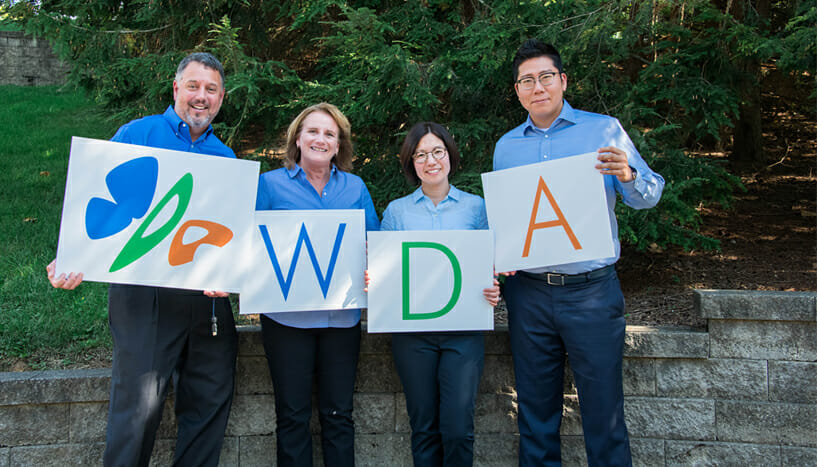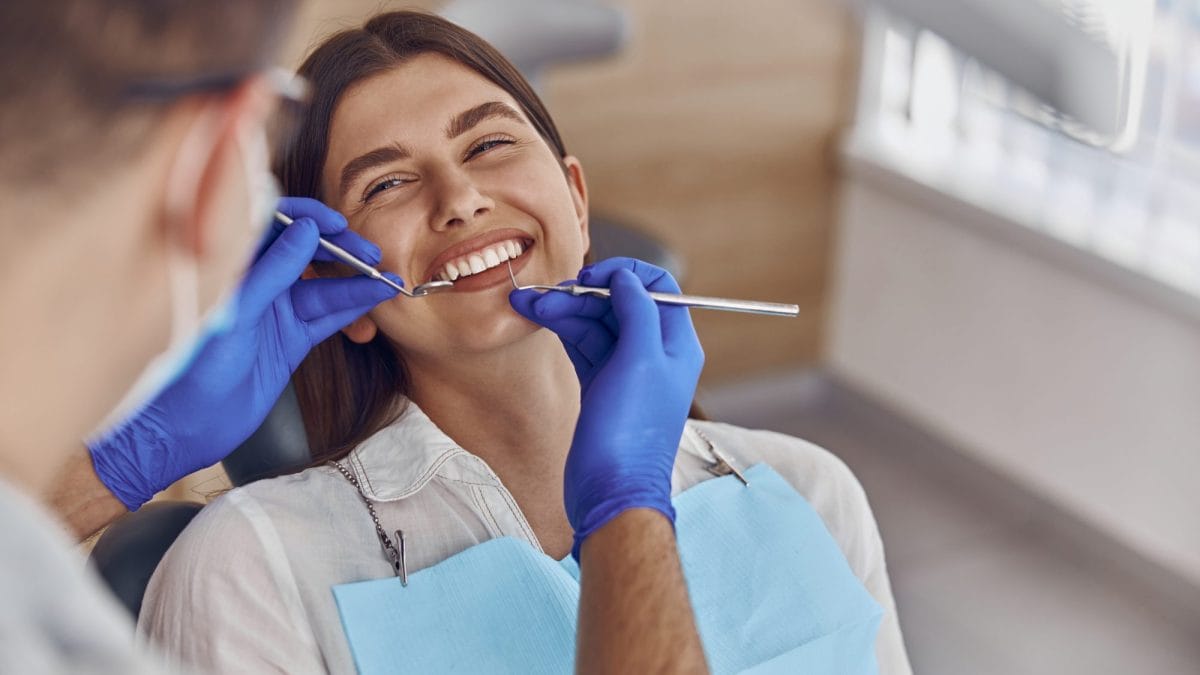
Having a dental emergency? Call us!
614-882-1135
We understand that dental emergencies can happen at any time. If you're in need of urgent care, give us a call, and we'll do everything we can to assist you when it matters most.
Patient Testimonials
Discover Better Dentistry
Become a part of the
Westerville Dental family!
We're accepting new patients. Our dental team prides itself on delivering a truly efficient and enjoyable experience while you’re with us.

Laser therapy in dentistry uses a strong beam of light to treat various oral health problems. Unlike old dental drills that use mechanical force, lasers work on the tissues at a molecular level, causing less damage and helping them heal faster. This treatment is less invasive, and patients experience less pain, bleeding, and swelling, making the visit more comfortable. This guide will walk you through the benefits of laser therapy throughout various dental procedures.
The Science Behind Laser Therapy
Laser therapy works well because it can turn light energy into reactions in the target tissues. When a laser beam hits the cells, the light goes into the tissue and activates cell activity. This process raises ATP production, which is essential for cell energy and repair.
In simple terms, laser therapy helps the body heal faster. It does this by increasing energy in the cells and encouraging tissue growth. This method is non-invasive, which means it doesn’t harm surrounding areas. It also lowers inflammation and helps you heal quicker than regular treatments.
Different Types of Dental Lasers and Their Uses
In dentistry, different types of lasers are used for various procedures and tissues. Here are some common types of lasers:
- Diode lasers: These lasers are well-suited for soft tissue procedures, such as gum contouring, teeth whitening, and treating gum disease.
- Carbon dioxide lasers are very flexible. They help with both soft and hard tissue procedures, such as preparing cavities, performing gum surgery, and performing biopsies.
- Erbium lasers are best for hard tissue work. They help prepare cavities and remove small bits of tooth material.
Each type of laser has its own wavelengths and power settings, allowing dentists to customize the treatment to each patient’s needs.
Advantages of Laser Therapy Over Traditional Methods
One main benefit of laser therapy is its accuracy. Unlike traditional dental tools, lasers only focus on the area that needs treatment, keeping the healthy tissues around it safe. The laser is set up to treat particular tissues without harming others.
This precision makes treatments better and helps patients heal faster, feel less pain, and recover more easily.
Precision and Accuracy in Procedures
Laser treatment is more precise than traditional methods, which helps dentists be very accurate. They can focus on the treatment area without harming nearby tissues.
This reduces bleeding and swelling, which are common side effects of normal dental work. For example, in gum surgery, laser treatment can remove sick tissue while keeping healthy gum tissue safe. This promotes quicker healing and makes the gums look better.
Reduced Pain and Discomfort for Patients
Laser therapy is known for greatly reducing pain and discomfort during and after dental work. Its accuracy means it causes less harm to nearby tissues, which leads to less swelling and pain.
Low-level laser therapy (LLLT) can also help release endorphins, the body’s own pain relievers. With less inflammation, patients often need less anesthesia and pain medicine, making the experience more comfortable and satisfying.
Lower Risk of Infection and Faster Healing
Laser therapy helps reduce the risk of infection because it has a natural sterilizing effect. The high-energy laser beam kills bacteria in the treatment area, creating a cleaner space for surgery and lowering the chances of infection after the operation.
Laser therapy also helps you heal faster. It boosts cell and collagen growth, reducing recovery times and allowing patients to return to their regular activities sooner.
Laser Therapy Applications in Dental Care
Laser therapy is very flexible and is now widely used in many dental treatments. This technology has changed how dentists handle gum disease, find and fix cavities, whiten teeth, and reshape soft tissues.
Laser therapy offers a softer and more accurate option for everything from regular cleanings to tricky surgeries. This improves treatment results and makes patients more comfortable.
Treating Gum Disease with Laser Therapy
Laser therapy is a strong option for treating gum disease, which affects millions of people. The therapy targets and removes bacteria-filled plaque and tartar deep under the gum line, helping to lower swelling and aid in healing gum tissue.
Laser phototherapy is one type of laser treatment. It helps to grow back tissue and makes the gums stick to the teeth better. This stops more gum recession and loss of bone. Compared to regular gum surgery, laser therapy is less invasive. It also allows for faster healing with less pain.
Cavity Detection and Preparation
Laser technology has greatly enhanced how dentists find and treat cavities. Laser light can spot early cavities that might be missed without special tools. This means less invasive treatments for patients.
When it comes to preparing cavities, lasers are a better and easier option than drills. The laser beam carefully removes decayed parts of the tooth while keeping healthy tissue intact. This gentle method often lowers the need for anesthesia, so many patients prefer it.
Teeth Whitening: A Brighter Smile with Lasers
Laser teeth whitening is a common use of laser therapy in cosmetic dentistry. It uses a laser beam to help a whitening gel with peroxide work better on the teeth. The laser energy speeds up the whitening by breaking down stains and colors.
This happens because it creates reactive oxygen species that pull stains from the enamel. Laser teeth whitening gives quicker and more striking results than old methods, helping patients have a brighter and more confident smile.
Soft Tissue Reshaping and Crown Lengthening
Laser therapy is used in soft tissue reshaping procedures, including gum contouring and crown lengthening. In crown lengthening, lasers help remove extra gum tissue, allowing more of the tooth crown to show, improving the look of the smile.
Laser gum contouring can help with uneven or too-high gums. It reshapes the gum line, making it look more balanced and smooth. These procedures are usually easy on the body, causing less bleeding and allowing for quicker healing than traditional surgery.
Addressing Common Concerns and Misconceptions
Patients often have many questions about laser dentistry, a newer method compared to traditional ones. They worry about safety, how well it works, and the cost.
However, many studies and real-life experiences show that laser dentistry is safe and works well. This is true when a skilled and experienced dentist performs it.
Safety and Effectiveness of Laser Dentistry
Laser dentistry is safe and effective. The FDA has approved dental lasers for many procedures, and many studies show that they work well for different oral health issues.
Even though laser dentistry is mostly safe, there can be some risks and side effects. This is essential to keep in mind, just like with any medical treatment. However, reported adverse effects are usually small and happen less often than with traditional methods.
Learn More About Laser Therapy
Laser therapy has added precision and quality to dentistry. This modern technology has allowed the therapy to help patients reduce pain and heal faster.
Patients enjoy advanced technology and personalized care to enhance their experience. Although there are common worries about the safety, results, and costs of laser therapy, it has proven to be a great solution that allows the mouth to heal quicker while avoiding infection.
For more information regarding laser therapy, contact Westerville Dental Associates today!


 Meet Dr. Stickel
Meet Dr. Stickel Meet Dr. Zody
Meet Dr. Zody Meet Dr. Choi
Meet Dr. Choi Meet Dr. Son
Meet Dr. Son
